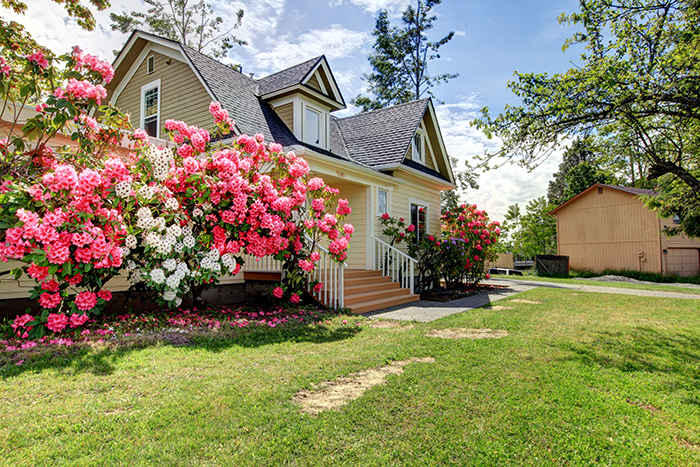Quebec resale market: Resilient amid uncertainty in Q1 2025
Despite an uncertain economic environment, residential sales continued to rise in Quebec during the first quarter of 2025, according to the latest data on the province’s residential real estate market published by the Quebec Professional Association of Real Estate Brokers (QPAREB).

For those considering buying a home, this has been an especially active period. A total of 24,070 residential sales were posted between January and March 2025 — a 14 per cent increase compared to the same period in 2024. This level of activity exceeds the first-quarter average since 2000 by 13 per cent.
Strong first quarter despite economic uncertainty
Quebecers continue to view real estate as a safe investment, even amid economic concerns linked to shifting trade relations with the United States.
“Despite the historic drop in Quebec’s consumer confidence index in this period, the confidence level for making major purchases — such as buying property — barely declined. This reflects, above all, a renewed confidence among Quebec buyers in the real estate market,” notes Charles Brant, QPAREB Market Analysis Director.
Across the province, prices, including those of small income properties, rose significantly, mainly as a result of lower interest rates. The median price for a single-family home increased by 10 per cent to $485,000 in the first quarter.
According to Charles Brant, this situation may be partly due to a declining number of homes for sale, particularly in the Quebec City market, leading to overheated conditions reminiscent of the pandemic period: “We’re also seeing a growing market imbalance that increasingly favours sellers in other CMAs and agglomerations, including some resort markets. This trend is worth monitoring in the current climate of uncertainty, as it could also reflect a certain reluctance on the part of homeowners to put their property on the market,” he adds.
Residential sales up across Quebec
All property categories saw an increase in sales during the first quarter, ranging from 13% per cent to 19 per cent compared to the same quarter last year.
|
|
||
|
Property type |
Number of sales |
Change |
|
Single-family homes |
15,444 |
+13% |
|
Condominiums |
6,492 |
+15% |
|
Plexes |
2,076 |
+19% |
Sales were also up in several Census Metropolitan Areas (CMAs) across the province.
|
|
|
|
CMA |
Change |
|
Drummondville |
+33% |
|
Montréal |
+15% |
|
Gatineau |
+14% |
|
Trois-Rivières |
+10% |
|
Québec |
+5% |
|
Sherbrooke |
+4% |
|
Saguenay |
+3% |
The market posted particularly strong activity in eight localities, with growth ranging from 38 per cent to 53 per cent. This surge led to a significant absorption of the inventory of properties on the market and increased competition among homebuyers, often to the disadvantage of first-time buyers.
|
|
|
|
Municipality |
Change |
|
Victoriaville |
+53% |
|
Salaberry-de-Valleyfield |
+52% |
|
Alma |
+45% |
|
Rivière-du-Loup |
+44% |
|
Matane |
+41% |
|
Rawdon |
+39% |
|
Sorel-Tracy |
+38% |
|
Joliette |
+38% |
Modest increases were also recorded in the markets of Mont-Tremblant (+4 per cent), La Tuque (+4 per cent) and Charlevoix (+3 per cent). In contrast, declines ranging from 1 per cent to 26 per cent were observed in seven urban centres, including Baie-Comeau (-26 per cent), Shawinigan (-13 per cent), and Rouyn-Noranda (-12 per cent).
Active listings continue to decline
In the first quarter of 2025, the number of homes for sale dropped to 34,479, down by 4 per cent from a year earlier, and down 29 per cent from the historical average of 48,355 for this time of year.
Median prices continue to rise
The real estate market remained very tight across the province, at times leading to overheated conditions and overbidding. This situation affected all CMAs, but was especially pronounced in Quebec City, Trois-Rivières, and Saguenay. As a result, rising prices have made homeownership less accessible, despite falling interest rates.
|
|
||
|
Property type |
Median price |
Change |
|
Single-family homes |
$485,000 |
+10% |
|
Condominiums |
$390,000 |
+7% |
|
Plexes |
$625,000 |
+20% |
Days on market decrease
The number of months required to sell the inventory in the first quarter of 2025 favoured sellers across the province. On average, it now takes 4.6 months to clear the inventory, all categories combined, a notable drop compared to the first-quarter historical average between 2000 and 2024 of 8 months.
|
|
||
|
Property type |
Average number of days |
Change |
|
Single-family homes |
62 |
-2 days |
|
Condominiums |
60 |
-2 days |
|
Plexes |
81 |
-2 days |
Quarterly highlights for the regions
Here’s a simplified snapshot of the real estate market in Quebec’s major metropolitan areas in the first quarter of 2025.
Montreal CMA
The real estate market in the Montreal CMA experienced a strong rebound, with 11,847 residential sales — a 15 per cent increase compared to Q1 2024. This level of activity is now in line with the historical average for a first quarter.
Listings decreased by 3 per cent across the Montreal metropolitan area compared to the same quarter in 2024. The number of months required to sell the inventory (all categories combined) edged down to 4.5 months.
|
|
||
|
Property type |
Median price |
Active listings |
|
Single-family homes |
$600,500 (+8%) |
-7% |
|
Condominiums |
$420,000 (+6%) |
+4% |
|
Plexes |
$800,000 (+7%) |
-16% |
Quebec City CMA
The Quebec City CMA recorded 2,711 residential sales during the first quarter of 2025, up 5 per cent compared to the same period in 2024. This result was 18 per cent above the historical average for this time of year and marks the fifth-highest first quarter since 2000.
Listings fell sharply to 1,996, down by 31 per cent relative to the same period a year earlier, and the lowest level in 25 years. For a first quarter, the number of months required to sell the inventory across all property types dropped to 2.7 months, the lowest on record since 2000.
|
|
||
|
Property type |
Median price |
Active listings |
|
Single-family homes |
$435,000 (+19%) |
-28% |
|
Condominiums |
$305,000 (+17%) |
-38% |
|
Plexes |
$507,500 (+30%) |
-29% |
Gatineau CMA
The Gatineau CMA posted 1,057 transactions in the first quarter of 2025 — a 14 per cent jump compared to the same quarter in 2024. This is the largest increase for this time of year since 2021. Activity was 7 per cent above the historical average for a first quarter.
Listings fell by 9 per cent in the first quarter of 2025 compared with the same period a year earlier. The time required to sell the inventory remained relatively stable compared to the same period last year, holding at 3.6 months.
|
|
||
|
Property type |
Median price |
Active listings |
|
Single-family homes |
$495,000 (+9%) |
-13% |
|
Condominiums |
$310,000 (0%) |
+11% |
|
Plexes |
$551,500 (+7%) |
-15% |
Sherbrooke CMA
The Sherbrooke CMA recorded 584 transactions in the first quarter of 2025, a modest 4 per cent increase compared to the same period in 2024. Transactional activity was 7 per cent above the historical average for this time of year and 9 per cent higher than the pre-pandemic level.
The days on market dropped significantly to 4.2 months. However, the upward pressure on median prices remains high, particularly for single-family homes and plexes, nearly doubling since the start of the pandemic.
|
|
||
|
Property type |
Median price |
Active listings |
|
Single-family homes |
$450,500 (+12%) |
+1% |
|
Condominiums |
$303,000 (-1%) |
+12% |
|
Plexes |
$465,000 (+6%) |
-14% |
Trois-Rivières CMA
The Trois-Rivières CMA saw a 10 per cent increase in residential sales in the first quarter of 2025, to reach 399 transactions. Listings rose by 3 per cent compared to the same quarter of the previous year.
The time needed to absorb the inventory, across all property types, remained stable at 2.5 months, the same as in Q1 2024. This is 4.4 months less than the historical average for this period.
|
|
||
|
Property type |
Median price |
Active listings |
|
Single-family homes |
$383,000 (+13%) |
+4% |
|
Condominiums |
$273,500 (+12%) |
+16% |
|
Plexes |
$392,750 (+42%) |
-12% |
Saguenay CMA
There were 331 residential sales in the Saguenay CMA during the first quarter of 2025, representing a 3 per cent decrease compared to the same period in 2024 when sales had surged by 25 per cent. This indicates a return to more typical market conditions. While the current level is below the historical average for a first quarter, the gap remains modest, though the trend warrants close monitoring.
Listings fell by 19 per cent compared with the first quarter of 2024. The inventory of properties for sale sold more quickly, falling from 4.4 to 3.6 months between the first quarter of 2024 and the first quarter of 2025, all categories combined.
|
|
||
|
Property type |
Median price |
Active listings |
|
Single-family homes |
$330,000 (+18%) |
-14% |
|
Condominiums |
NA |
-36% |
|
Plexes |
$295,000 (+8%) |
-33% |
Drummondville CMA
The Drummondville CMA saw residential sales rise by 33 per cent in the first quarter of 2025 compared to the same period in 2024, reaching 265 transactions. Meanwhile, active listings declined by 14 per cent, marking a reversal after three consecutive years of increases during this time of year (2022–2024).
The number of months required to sell the inventory (all categories combined) thus edged down to 4.3 months.
|
|
||
|
Property type |
Median price |
Active listings |
|
Single-family homes |
$384,500 (+11%) |
-13% |
|
Condominiums |
NA |
NA |
|
Plexes |
$442,500 (+17%) |
-19% |
The 2025 resale market will continue to favour sellers
The residential real estate market remained competitive in the first quarter of 2025. Homebuyers — especially first-time buyers, who typically have smaller down payments — need to be well prepared. Overall, rising property prices continue to favour sellers, particularly in the single-family home segment.
If you’re planning to buy your first home or invest in real estate, now may be a good time, despite price increases. Lower interest rates are helping to offset the impact of higher prices, and the overall market dynamic reflects continued confidence in real estate as a secure investment. Furthermore, the persistent imbalance in favour of sellers suggests that the upward pressure on prices is likely to continue in the coming months, while long-term price declines remain hypothetical, despite broader economic uncertainties.
To navigate this constantly evolving market, consider working with a real estate broker. They can help you find the best opportunities — whether you’re buying, selling, or renting. For the latest insights on price trends and market data, consult the QPAREB Residential Market Barometer or the detailed monthly statistics.
Article written in collaboration with:


See also:
13 expenses to budget for when buying a home
 The Largest Number of Homes for Sale
The Largest Number of Homes for Sale



